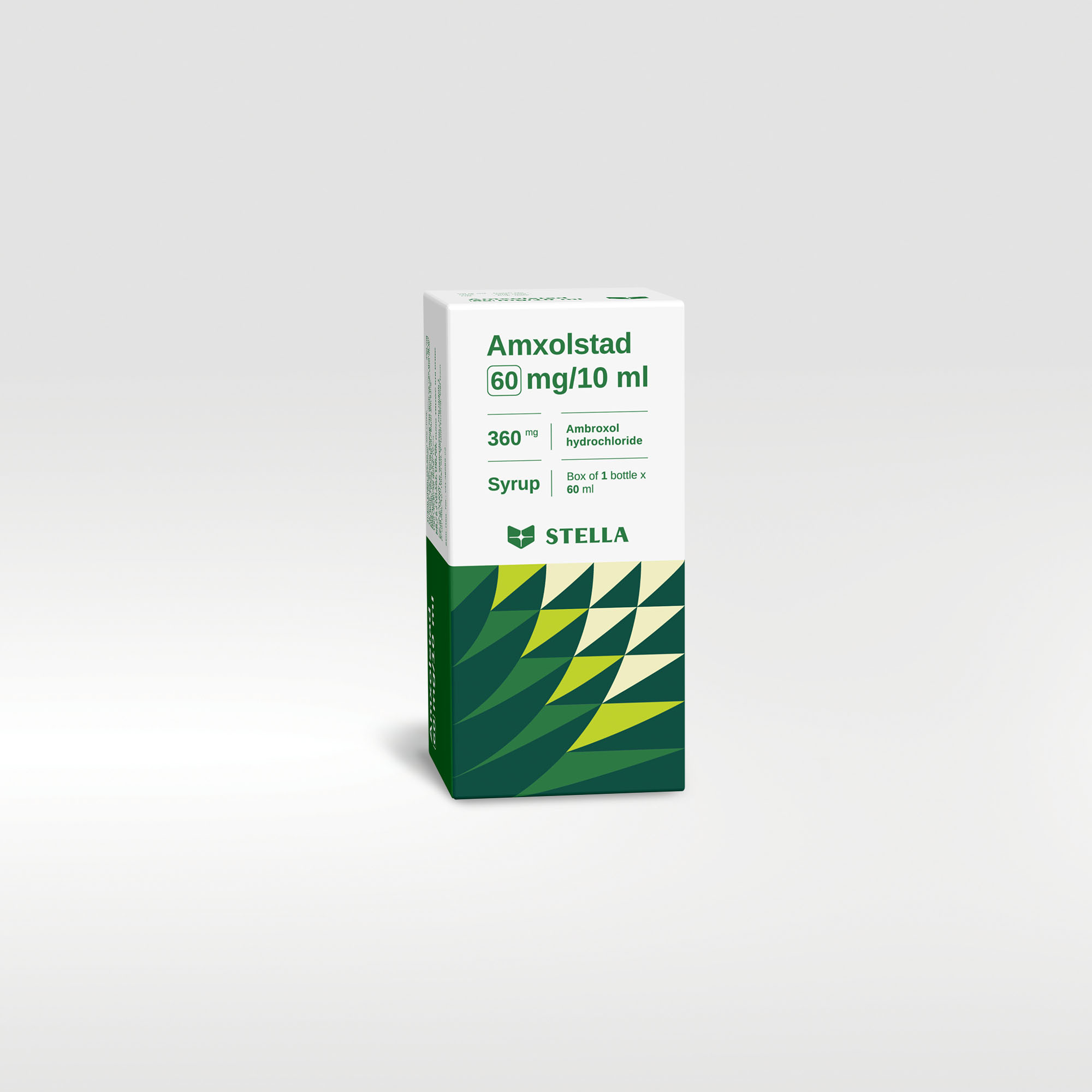Amxolstad 60 mg/10 ml OTC
Ambroxol hydrochloride has mucokinetic and expectorant properties. It stimulates, through its action on secreting cells, bronchial secretion and promotes the production of more mobilizable mucus. It increases ciliary activity.
| Pack size | Box of 10 ampoules x 10 ml. Box of 1 bottle x 60 ml, 100 ml. |
| Shelf-life | 24 months |
| Composition | Ambroxol hydrochloride. |
| Dosage forms and strengths | Syrup Each 10 ml syrup contains 60 mg ambroxol hydrochloride Each 60 ml syrup contains 360 mg ambroxol hydrochloride Each 100 ml syrup contains 600 mg ambroxol hydrochloride |
Product code :








